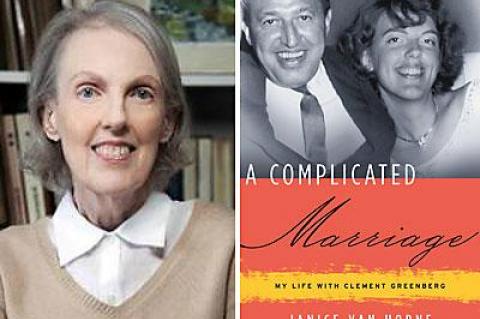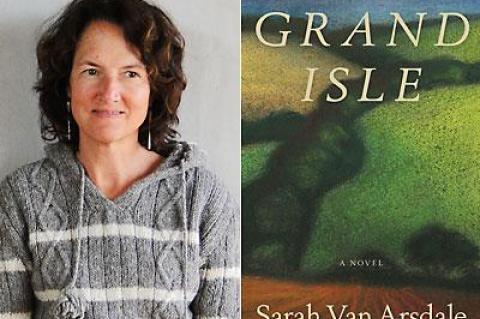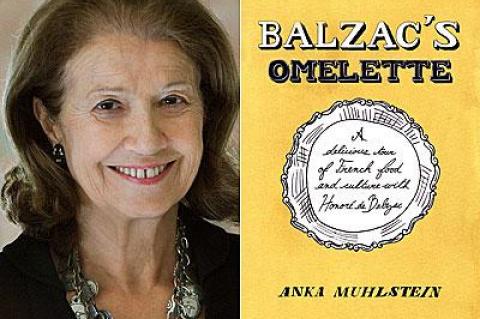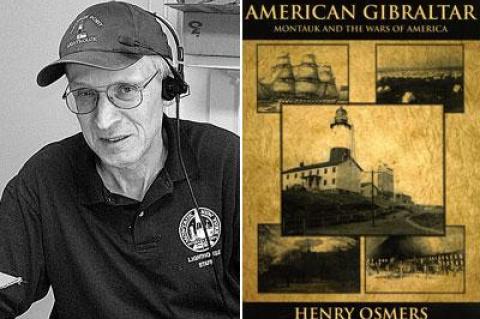“Masscult and Midcult”
Dwight Macdonald
New York Review Books, $16.95
 Long Island Books: The Great Contrarian
Long Island Books: The Great Contrarian“Masscult and Midcult”
Dwight Macdonald
New York Review Books, $16.95
 Missing Jimmy
Missing Jimmy“Ponies & Rainbows”
Sean Egan
BearManor Media, $32.95
Buried somewhere in Sean Egan’s biography of James Kirkwood Jr. is an interesting book and an interesting man. Unfortunately the storyline is so smothered in irrelevant detail that it takes extraordinary patience to unearth them.
 ROUNDUP: From Parasites to Plotlessness
ROUNDUP: From Parasites to PlotlessnessHas a writer ever been more productive in death than Kurt Vonnegut? It’s a mini industry, from posthumous collections of his unpublished short fiction (“Look at the Birdie,” “While Mortals Sleep”) to the hefty Library of America volumes of his life’s work, the most recent of which, “Novels & Stories, 1950-1962,” came out in April. In October, Delacorte will release a book of his letters and Vanguard will publish “We Are What We Pretend to Be: First and Last Works.”
Furst Reads in Sag
Ah, September in Paris — the bridges over the glittering Seine, the cafes, and, in Alan Furst’s latest novel of espionage, intrigue, and lust, the impending advance of Nazi tanks across the continent. It’s 1938 in “Mission to Paris,” and caught up in the machinations leading up to war are an Austro-Slovenian Hollywood actor, a German baroness, a Russian actress and spy, and for good measure a Hungarian diplomat or two.
 Long Island Books: Really Top Chef
Long Island Books: Really Top Chef
“The Man Who Changed the Way We Eat”
Thomas McNamee
Free Press, $27
So how’s the East End market for literary readings? Strong? Steady? Saturated? Is the top-flight quality outpacing demand, or driven by it, and not just by the bursting supply of name authors here?
At a recent morning assembly at an elementary school not far west of the Shinnecock Canal, the guest reader, Jay Schneiderman, was introduced as a renaissance man, if not exactly in the following words: former East Hampton Town supervisor, legislator who finally broke the County Road 39 traffic logjam, vanquisher of that tough old pol George Guldi, drummer, and now, author and illustrator.
 Long Island Books: Quiet Comfort, Rich Gossip
Long Island Books: Quiet Comfort, Rich Gossip“The Southampton
Cottages of Gin Lane”
Sally Spanburgh
History Press, $21.99
May King Van Rensselaer, in her quite brilliant book “The Social Ladder,” published in 1924, clearly states what the formula was behind the thoughts of those 19th-century colonists who planted their banknotes of conquest throughout the South Fork of Long Island.
Poetry Pops Up
Poets, prick up your ears: A new venue to air your verse has made itself available, open mike and all. On Tuesday starting at 5:30 p.m., Phao restaurant on Main Street in Sag Harbor will inaugurate Poets’ Prix Fixe with a couple of journal-published East End writers, Lucas Hunt and Michelle Whittaker, both of them associated with the M.F.A. program in Southampton. The organizer is Teri Kennedy, known for putting together shows of performance art and readings at Ashawagh Hall in Springs.
It’s almost that time again: sun hats and sunglasses, white linen donned by the yard, the inevitable chardonnay in clear plastic tumblers, and tumbling-down bons mots beneath the spreading limbs of an old Norway maple. In other words, Fridays at Five at the Hampton Library in Bridgehampton.
James Joyce enthusiasts will commemorate the author’s life and his novel “Ulysses” on Saturday at a Bloomsday celebration at Canio’s Books in Sag Harbor. A “Joyce-inspired performance” with Joyce portrayed by Mark Singer, an actor and vocalist, will be part of it.
“Ulysses” follows the events of an ordinary day in the life of the fictional character Leopold Bloom in his home city of Dublin. The title refers to the hero of Homer’s “Odyssey,” and there are parallels between characters and events in both works.
Drumm TV
The Star’s Russell Drumm can be seen reading from his forthcoming novel, “A Rogue’s Yarn,” on LTV this week — specifically, tomorrow at 1 p.m., Saturday at 4:30 p.m., Sunday night at 10:30, Tuesday at 11 a.m., and on Friday, June 8, at 1 p.m. The novel, the story of an aging homeless surfer living in Waikiki with a dark secret, will be out first as an e-book this summer.
College Writing Awards
College students. Might there be any reading this page? Well, you family relation out there, here’s something of interest to pass on: Suffolk Community College is sponsoring creative writing awards for college writers. They come with prize money and online publication for the winners in four categories: poetry, fiction, creative nonfiction, and one-act play.
 Survivors
Survivors“An Uncommon
Journey”
Deborah Strobin and Ilie Wacs
Barricade Books, $24.95
Just as many people believe that the name of every victim of the Holocaust deserves to be remembered in perpetuity, so, too, it is held, the story of each survivor deserves to be told and heard. Both gestures are rooted in the dual needs to honor and to remember.
Should you pick up the new Southampton Review expecting familiar contributors, you’d be right and wrong. First of all, who’s going to complain about opening a journal to more poems, four of them, by Billy Collins? That star of versification known for a peerless sense of humor is here contemplative — digging up an old toy truck in his backyard and thinking of the past, or pondering the oddity of the writing life.
 Out of the Garment District
Out of the Garment District“The Man Who Wanted to Buy a Heart”
Leonard S. Bernstein
University of New Orleans Press, $18.95
Orion Award for Safina
“The View From Lazy Point: A Natural Year in an Unnatural World” by Carl Safina won the 2012 Orion Book Award last week. The award recognizes “the book’s success in addressing the human relationship with the natural world in a fresh, thought-provoking, and engaging manner,” according to a release from Orion, an environmental, literary, and cultural magazine out of Great Barrington, Mass.
 Nightfall in Suburbia
Nightfall in Suburbia“Long Island Noir”
Edited by Kaylie Jones
Akashic Books, $15.95
What exactly is noir? The French film critics who coined the label for a particular string of ’50s hard-boiled American melodramas such as “Double Indemnity” described it as “oneiric, strange, erotic, ambivalent, and cruel.” I also think noir, be it movie or story, needs to create a certain discomfort, an unease that doesn’t come with a straightforward thriller or whodunit.
“Long Island Noir”
Forget the sunshine and beaches. You don’t have to sit in traffic or schlep through a dispiriting strip mall to know of Long Island’s dark side. And now its depths are plumbed in a more literary way in an anthology, “Long Island Noir,” edited by Kaylie Jones and out this week from Akashic Books.
 Long Island Books: Beneath the Swagger
Long Island Books: Beneath the Swagger“A Complicated
Marriage”
Janice Van Horne
Counterpoint, $26
Clement Greenberg was one of the most significant — some would also say the most acerbic, bombastic, and pugilistic — art critics of the 20th century. He presided over the development of modernist art for some 40 years, championing American abstraction (he coined the term “Abstract Expressionism”), artistic taste and purity, formalism, and flatness in painting. He helped turn New York City into the capital of the art world, and he fueled America’s dominance in a global market.
 Long Island Books: Love and Its Risks
Long Island Books: Love and Its Risks“Grand Isle,” Sarah Van Arsdale’s absorbing and suspenseful new novel, takes place in an eponymous North Fork enclave that closely resembles Shelter Island. A rather large cast of characters, most of them summer residents of Grand Isle, are introduced early on. It’s to Ms. Van Arsdale’s credit that they’re all clearly differentiated and pertinent to the tragedy at the heart of the story: an accidental death and its cover-up that create a ripple effect in the island’s close-knit community.
____
“Grand Isle”
Sarah Van Arsdale
 Long Island Books: Unto Rome
Long Island Books: Unto Rome“Rome”
Robert Hughes
Knopf, $35
How does one tackle a subject as vast, complex, and full of bravado and drama as the history of the city of Rome? The answer, in the form of Robert Hughes’s “Rome: A Cultural, Visual, and Personal History,” is as an opinionated but erudite tour guide.
 At the Parisian Groaning Board
At the Parisian Groaning Board“Balzac’s Omelette”
Anka Muhlstein
Other Press, $19.95
While walking past the New Books table you see a small, square, butter-colored book with an irresistible title — “Balzac’s Omelette.” Don’t tell me you can pass by without picking it up for a look, even if it is just in mute tribute to the correct spelling of omelette.
 Long Island Books: Montauk, the 300-Year War Zone
Long Island Books: Montauk, the 300-Year War Zone“American Gibraltar”
Henry Osmers
Outskirts Press, $21.95
Few would guess that the 11,000 acres of scrub oak and pine that we call Montauk can boast a history as complex as a small country’s. In “American Gibraltar: Montauk and the Wars of America,” which covers 300 years, Henry Osmers chronicles the regional repercussions of eight conflicts, from the Indian wars to the cold war years. Owing to its strategic location, Montauk has intersected with our war history and made one of its own.
Copyright © 1996-2024 The East Hampton Star. All rights reserved.